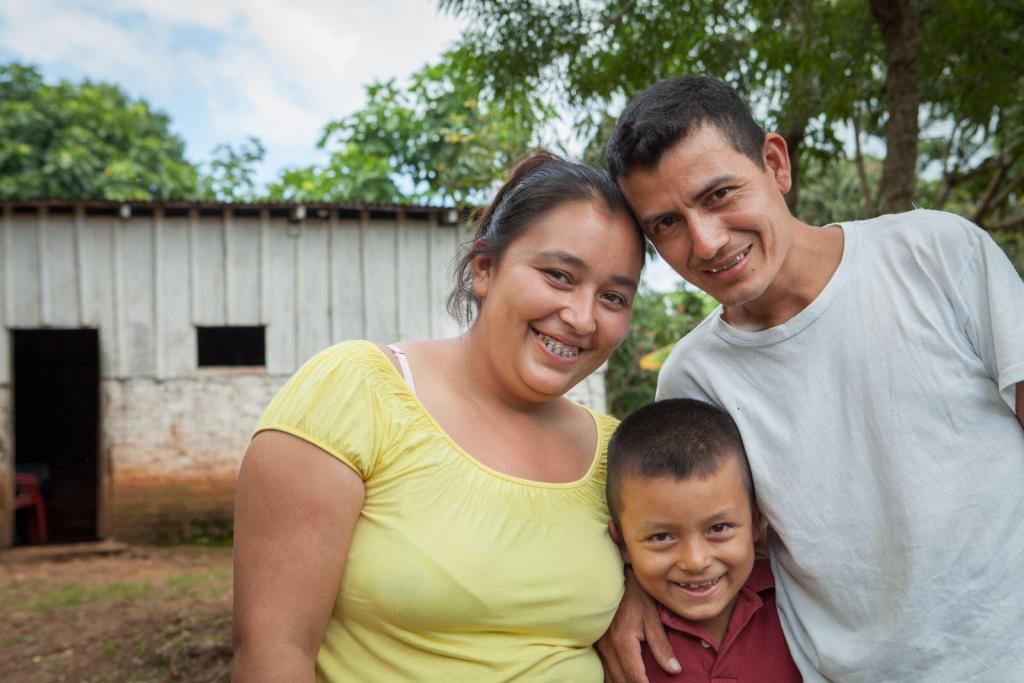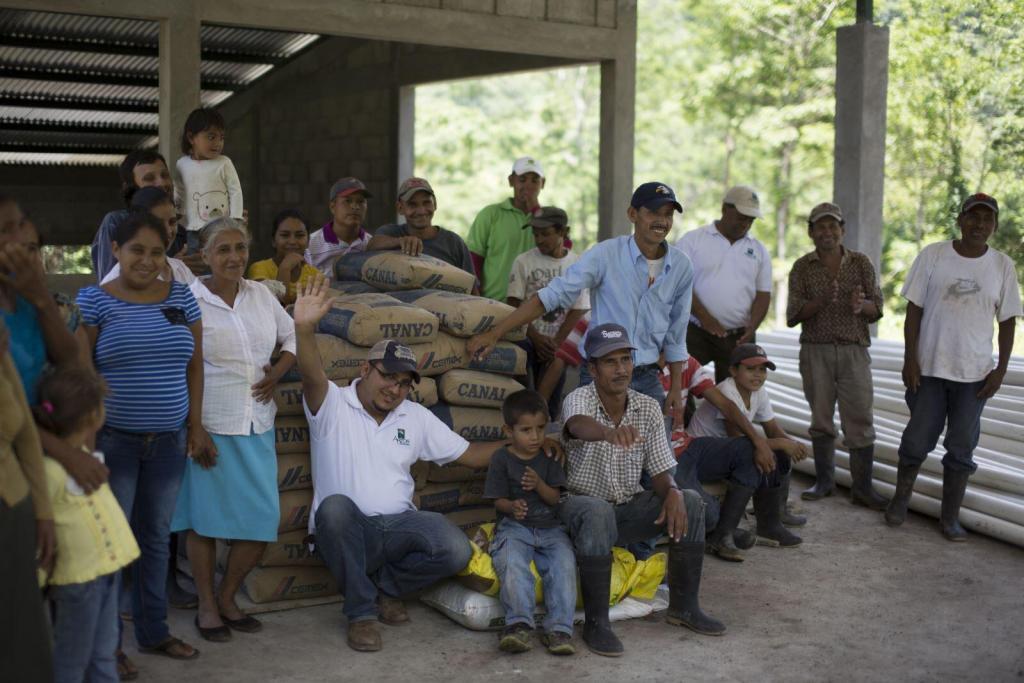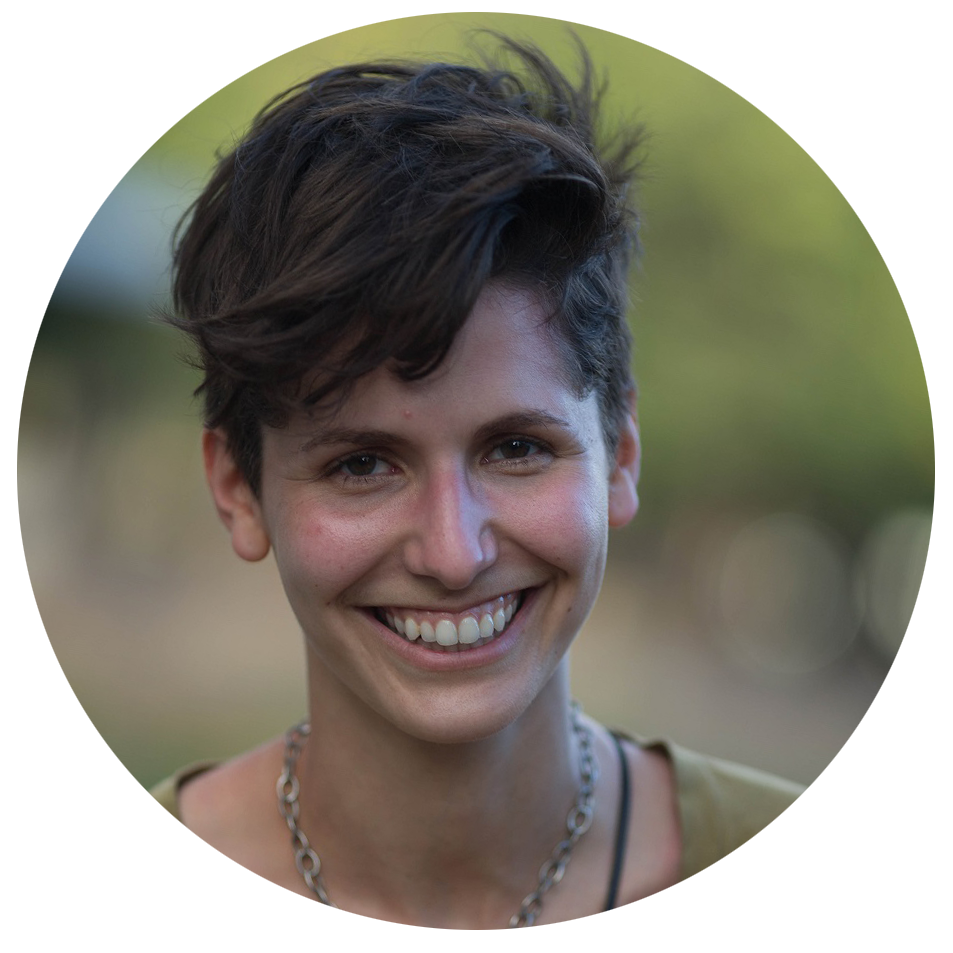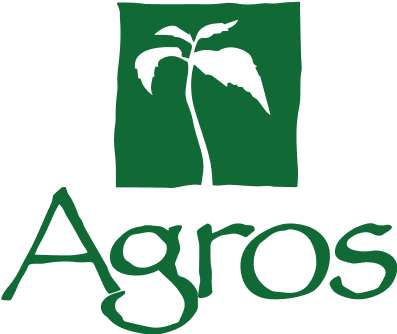Before 2016 gallops too quickly along, we wanted to share some of our favorite 2015 photos with you.
They capture fisher-businessmen, pudgy cheeks, a blessed new Agros community in Nicaragua, and new coffee technology. 2015 was a courageous year at Agros, thanks to you, as we launched 50 families out of poverty in La Bendición, and walked alongside 705 families in 11 other communities across Nicaragua, Honduras, Guatemala, and Mexico on their journey toward dignity, prosperity, and land ownership.
But numbers don’t tell a very good story. Pictures do a better job. Enjoy these photos, and share your favorite 2015 memories with us in the comments.
#1. LA BENDICIÓN LAUNCHES 50 NEW FAMILIES ON THE PATH OUT OF POVERTY

This spring, with your help, we partnered with 50 families to launch La Bendición, our first new community since Tierra Nueva, Nicaragua in 2011.
The master plan for La Bendición incorporates 30 years of learning into a model that tackles past challenges, like lack of water and family attrition. This spring The Global Studio, our design partner, helped us select fertile, well-positioned land and engage families in a participatory design process. Families helped make key decisions around lot size and housing placement in one of the final community layouts, shown here. They’ve nearly completed housing, water, and community infrastructure construction, laying the foundation to build the community of their dreams.

“I’m so happy to be here,” says Walter, one of the founding partners of La Bendición. “This is a fertile land … We know that if we plant corn we will harvest corn and if we plant beans we will harvest beans. It is a blessing. I feel happy and at peace here.”
#2. TIERRA NUEVA BENEFICIO

Beneficio means “benefit” in Spanish. Thanks to you, that’s just what this new beneficio – a coffee wet mill – will do for Tierra Nueva’s 150 coffee-growing families. We snapped a photo of much of the community gathered to show us the building, still under construction.
We partnered with Engineers Without Borders to build this beneficio so families can efficiently depulp, ferment, wash, and dry their own coffee. The more farmers process their coffee, the higher a price they can command in the market for their crop. Plus dried coffee beans can be sorted by quality and size, allowing farmers to sell their best beans for a premium. Advances in technology like this beneficio leverage community resources to help farmers move up the value chain from survival subsistence farming to profitable and dignified agribusiness ownership.

Victor’s wife Candida worked in the coffee fields from age 14. For his three children, Tierra Nueva offers a different life: village school, playtime with neighbors, and the promise of inheriting land and a thriving agricultural business.
#3. FISHY BUSINESS IN PIEDRA DE HOREB

Fish farmers in Piedra are generating a prosperous living through the business of fish – a market-driven model that we’re ready to replicate.
Five years ago, farmers in Piedra de Horeb like Germán were forced to work for giant haciendas, without any control over their futures. Now, well-organized, they’ve created their own sustainable, registered and profitable business. They consistently supply in-demand tilapia to markets that guarantee a steady income. That stable income, combined with safe housing, healthcare access, and education for their children, has changed the trajectory of these families’ lives.
Witnessing the success of Piedra’s small scale business operation is an encouraging and promising glimpse at what the future can look like for all of our communities if we implement this market-driven strategy on a much larger scale in 2016.
#4. HEALTHY BABIES IN NUEVA ESPERANZA
“We didn’t have the opportunity to grow up in a good environment, to study or to have nice things,” remembers Carlos, Carlito’s father. “Our dream is to give these things to our children.”
When Carlito was born, his mother Yaris knew breastfeeding was crucial to ensure healthy development. But her milk made him sick. Agros staff helped Yaris identify that Carlito was allergic to breast milk and taught her how to use a powder to make soy milk instead. It worked. Carlito’s chubby cheeks are evidence of Nueva Esperanza’s low rate of child malnutrition – the result of a holistic program of maternity support, child weighings, nutrition training, and help accessing resources like powdered soy milk for Carlito.
The proof is in the pudge – Carlito is one of more than 50 healthy children in Nueva Esperanza, where your support has beaten back child malnutrition.
What’s your favorite photo or memory of 2015? Share it with us in the comments!
 Anna Lehn
Anna Lehn
Marketing & Communications Manager




